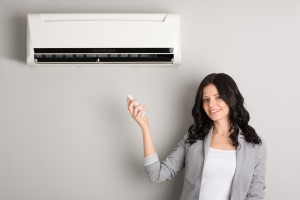Though most of us loathe to admit it, the Australian summer is more tolerable, shorter even, with the cooling vents of an air-conditioner. Despite a variety of stereotypes bouncing around the internet, yes, we do sweat; we feel the heat and swelter as much as anyone else, eager to escape the often vicious December days leading up to Christmas, brows lined with perspiration. If you’re an air-con fan, you’re probably aware there are a few things you can do to keep your balmy best friend in the best repair possible, to save any unexpected breakdowns. Take it from an Aussie, you don’t want a faithful unit to struggle against the elements and fail on the hottest day of the year.

Power Down
Make sure the unit is turned off. We don’t want you crispifying for the want of cool air, so switch the condenser and evaporator assembly to the off swatch to save yourself complications…Some of them are very painful and expensive!
The Evaporator
Note, this component is not always accessible. If you can locate and clean the evaporator, make sure to do so annually; but how do you distinguish whether you can access it or not, and what does it look like? If the foil wrapped insulation is located in the plenum at the front, you might have a shot at it, if however it is encased in a sealed box, don’t bother. Every model is different, from the no-label alternatives to the full costed editions, cleaning the evaporator may demand a little extra research on your part (sorry, we can’t lay out everything for you). Contact your manufacturer for instructions and try to follow them to a tee, for it can be considerably harmful to your unit if you try and force it open.
The Condenser
Most air conditioning units lodge their condensers externally, located next to or under the house, depending on how many storeys the unit or units service. Gratefully, the sound from the condenser is minimal and since it’s outdoors, you probably won hear it all; unfortunately, the condenser can be assaulted by natural debris, including leaves, lawn scapes and dust, affecting the progress of the condenser fan as it moves across the coil. On the intake side, check the rotation spectrum of the air as it moves in the coil before turning it off, and cleanse with a commercial grade specialised cleaner.
The Fans
Fans are the bread and butter of any cooling system, as loose or damaged blades cause many malfunctions that can be otherwise fixed within a few moments. Simply open the cabinet and check each fan, wiping the dust and dirt of everyday life away with a micro-fibre cloth and tighten the offending loose screw with an Allen wrench. Since you have the hutch open, give everything a bit of a tightening.
Do you have any handy tips to share with your fellow readers? Let us know in the comments below and stay safe this summer!


